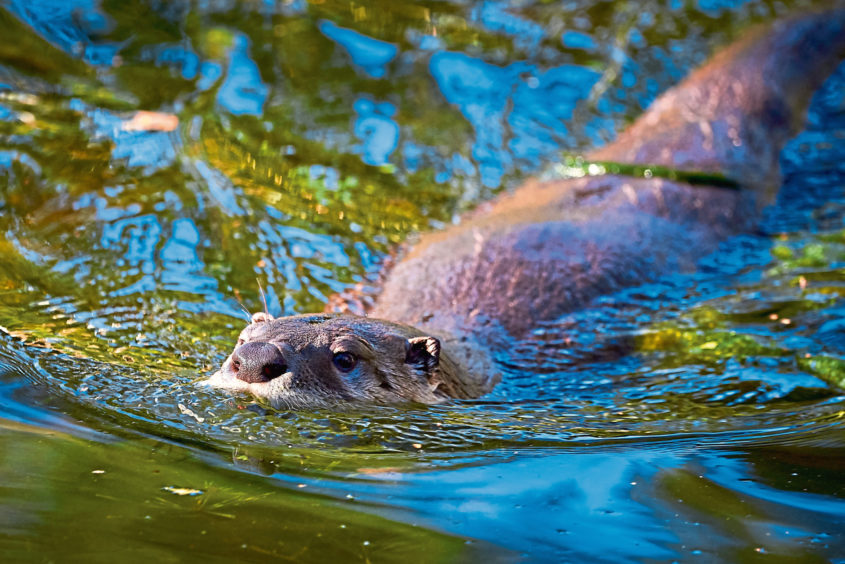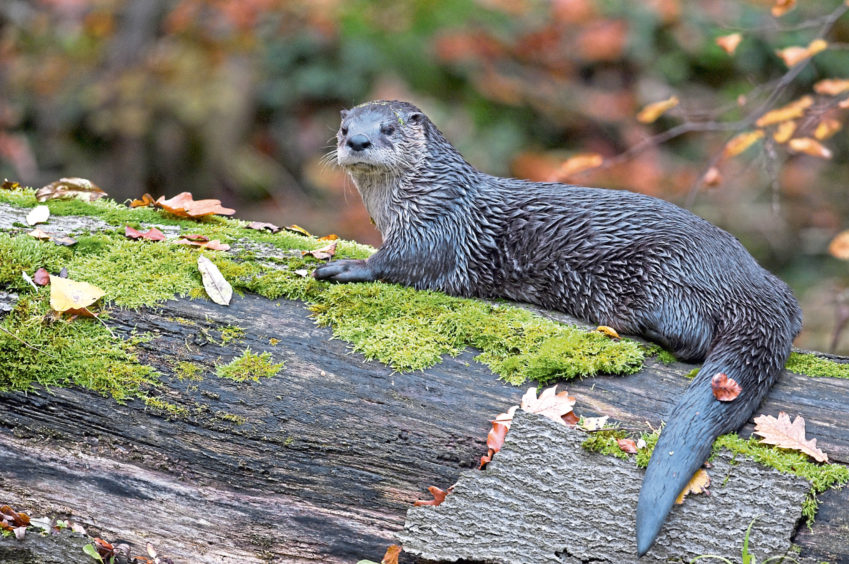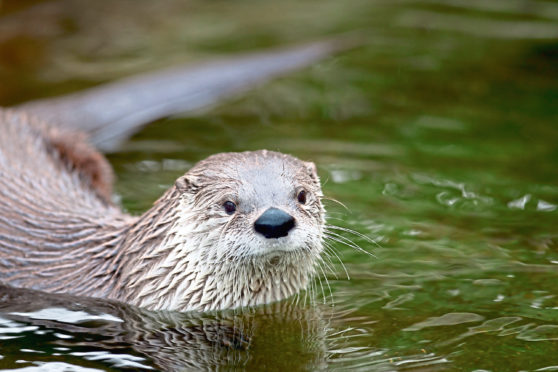River otters tend to be nocturnal, and as such are not often seen. However, those that live by the sea on the west coast of Scotland and in the northern isles are often active during the day.
A swirl in the water by a wind-tumbled alder on the far bank of the River Devon, so I stopped to investigate, unsure what type of creature had caused the commotion.
In the tangled alder branches a few feet above the water’s surface, the rhythmic white flash from the nervously twitching tail of a moorhen caught my eye. The bird was worried: something had spooked it.
Then, another surge of water and up bobbed the head of an otter. It immediately spotted me, and with discernible panic in its eyes, dived under again.
I waited. Bubbles rippled the surface. Please reappear, I prayed; please show yourself, for daytime sightings of river otters are rare and so very precious. The stream of bubbles continued to ruffle the water, but time ticked-on and no otter materialised.
A sigh of disappointment: the animal had made good its underwater getaway, and rather than the bubbles being produced by the otter, I concluded they were a mere coincidence, probably caused by gas being released by decomposing vegetation on the riverbed. Indeed, I had witnessed at first hand such riverbed bubbling a few months previously when I had snorkelled in this languid stretch of the river.

Despite the fleeting glimpse of the otter, the encounter thrilled me to the core, the memory of its curious face lingering in my consciousness.
As I continued along the riverbank, other otter sightings on the Devon reflected upon my mind. On one memorable occasion, an otter twisted below my feet in a calm backwash pool, corkscrewing its body continually, which gave me the impression that it was deliberately stirring up detritus from the riverbed to attract minnows and small trout.
Otters are intelligent animals and will have learned such behaviour by accident, or by watching other otters. Certainly, when I wade in the river when fly-fishing, small fish often dart around my feet to feast upon the titbits disturbed.
That’s the thing about rivers; they hold so much fascination and wonder. There is nothing more compelling than these ribbons of life that meander through our fields and hills; some rushing and urgent, others slow and tranquil. But whatever their nature, they are always places full of incredible diversity, ranging from tiny bugs and microscopic algae to much larger creatures like the salmon and otter.

It is a river’s power that inspires; the tumbling waterfalls and bowl-shaped cauldrons forged by the forces of water over the millennia; the surging rapids and the crumbling banks, the ability to inundate surrounding fields in autumnal floods.
Rivers never stand still, new channels develop, and shingle islands miraculously materialise, whilst others are destroyed and swept away. Rivers are as alive as any creature that live within their bounds, and as such, are places we should cherish and revere. They are the very lifeblood of our environment; the beating heart that supports so much else.










